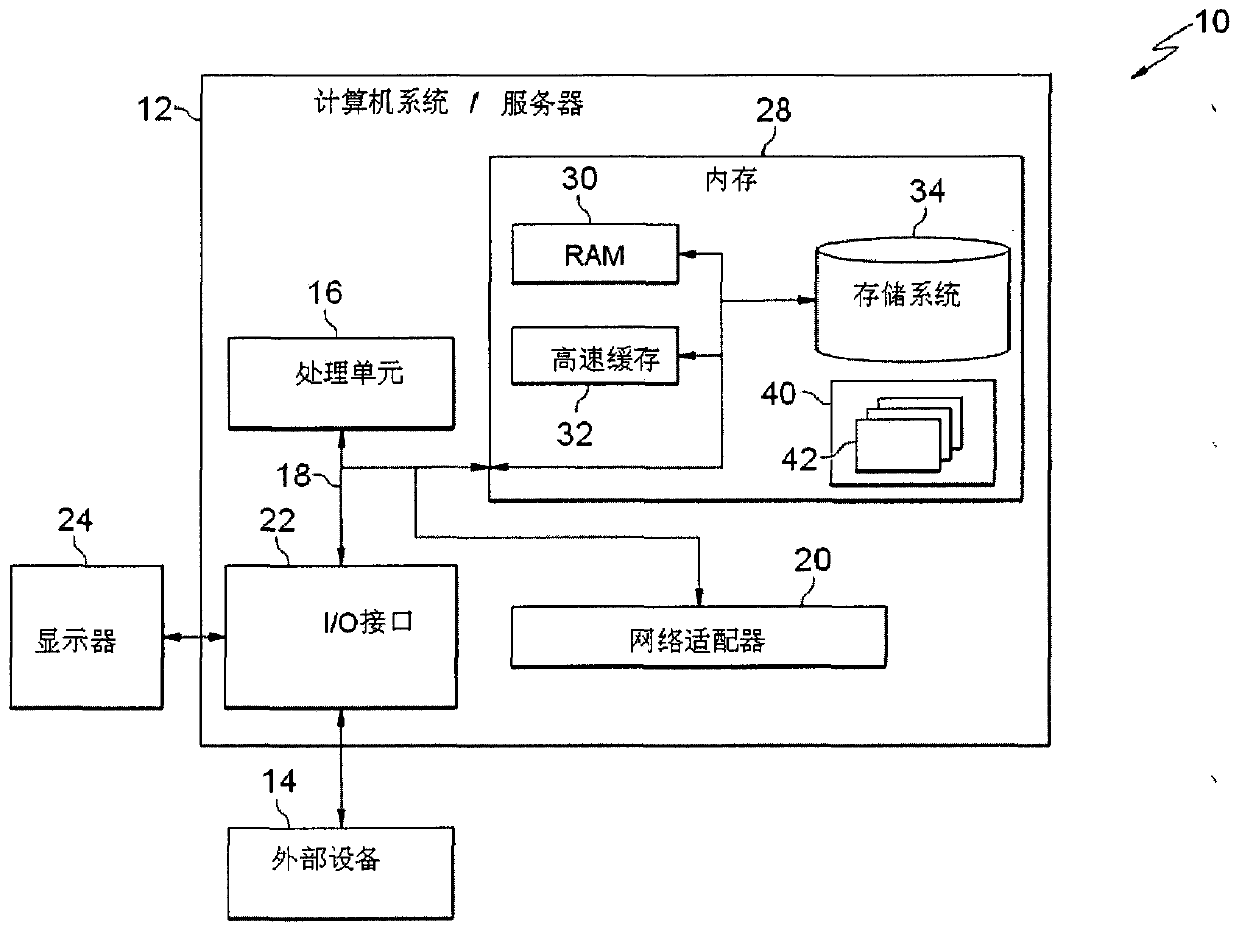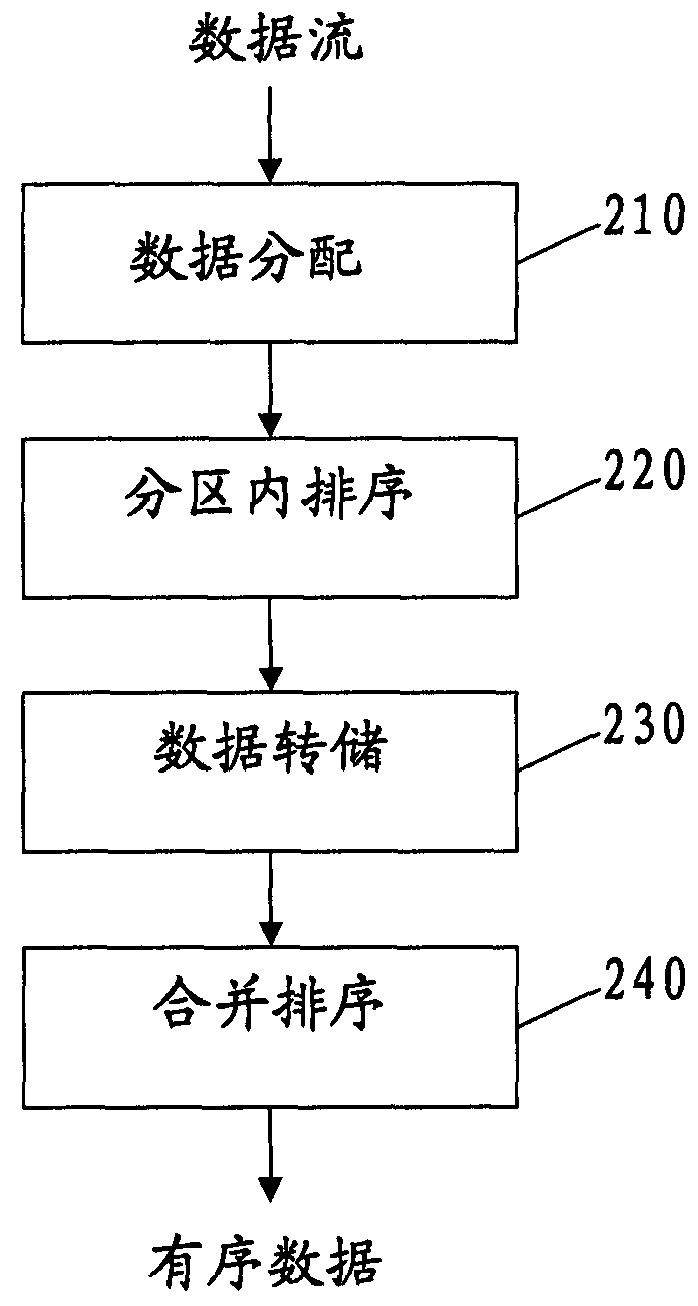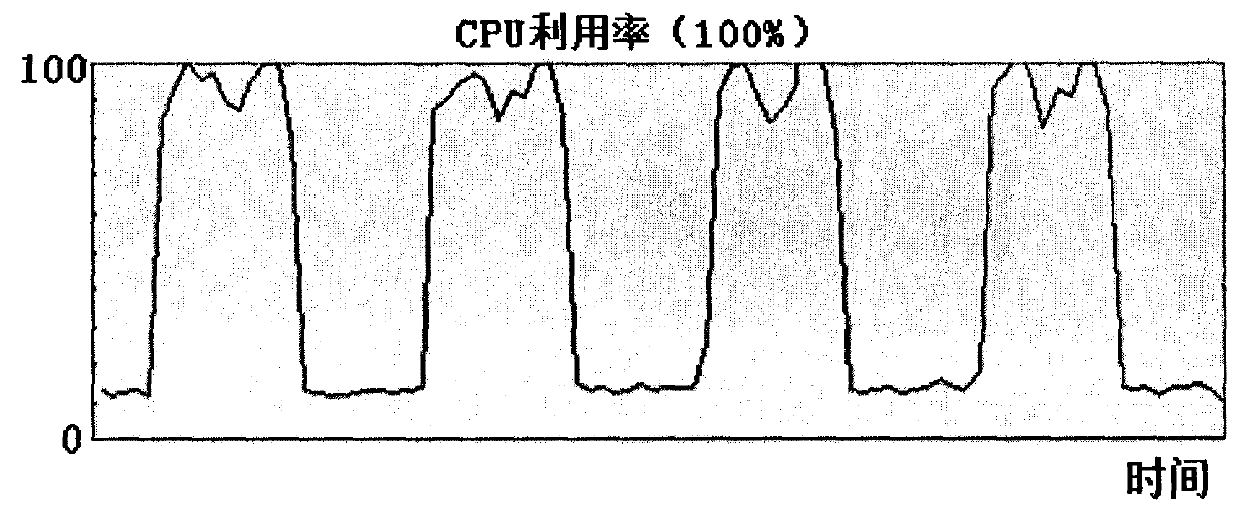Data-driven parallel sorting system and method
A data-driven, sorting method technology, applied in data classification, processing input data, electrical digital data processing, etc., can solve problems such as not so obvious, slow sorting process, and reduce memory blocks, so as to optimize utilization and improve performance , to avoid the effect of concentrated competition
- Summary
- Abstract
- Description
- Claims
- Application Information
AI Technical Summary
Problems solved by technology
Method used
Image
Examples
Embodiment Construction
[0021] exist image 3 In the prior art parallel sorting method used in , as soon as a data record is assigned to a partition, the partition sorts the data record and other sorted data records (if any) in the partition's memory block. Reorder, and once a partition's memory block becomes full, write the data blocks in that memory block to disk. Therefore, this parallel sorting method is a data-driven method.
[0022] The inventors of the present invention have found that the decrease in system resource utilization is mainly due to the following two reasons:
[0023] 1. The peak of CPU resource usage requirements of each partition occurs almost at the same time. The peak occurs when the amount of data in the memory block exceeds a certain threshold until the memory block becomes full (because the more data in the memory block, the sorting process needs to be compared The more times, the more CPU resources are used).
[0024] 2. Due to the round-robin data allocation, the memor...
PUM
 Login to View More
Login to View More Abstract
Description
Claims
Application Information
 Login to View More
Login to View More - R&D
- Intellectual Property
- Life Sciences
- Materials
- Tech Scout
- Unparalleled Data Quality
- Higher Quality Content
- 60% Fewer Hallucinations
Browse by: Latest US Patents, China's latest patents, Technical Efficacy Thesaurus, Application Domain, Technology Topic, Popular Technical Reports.
© 2025 PatSnap. All rights reserved.Legal|Privacy policy|Modern Slavery Act Transparency Statement|Sitemap|About US| Contact US: help@patsnap.com



